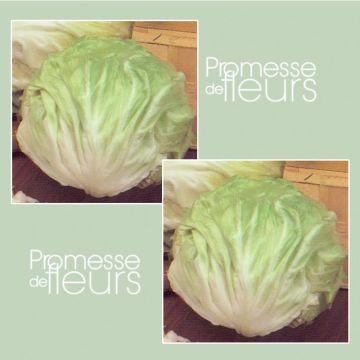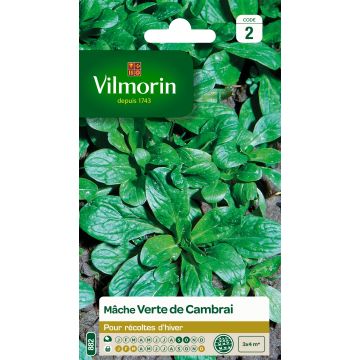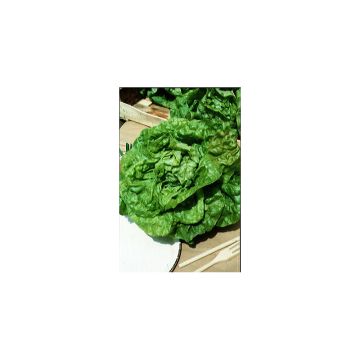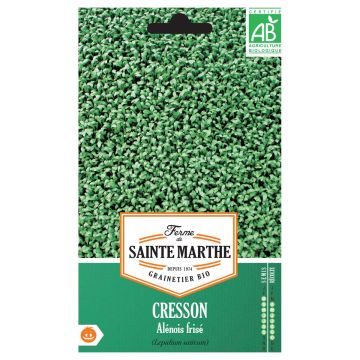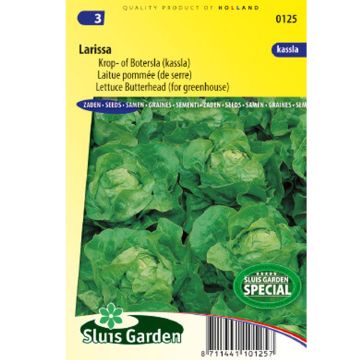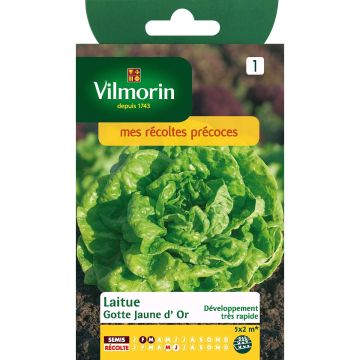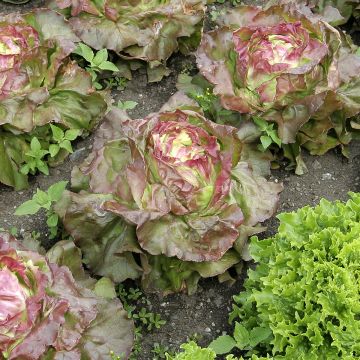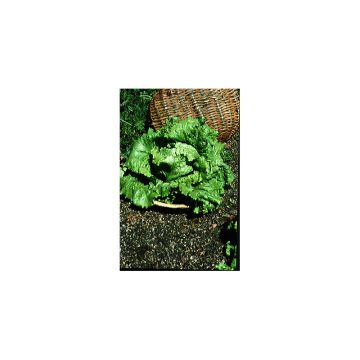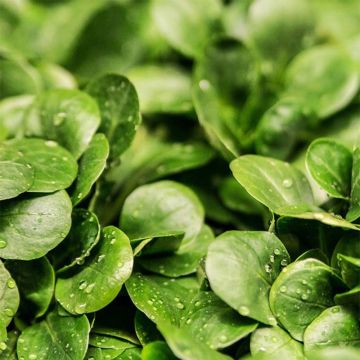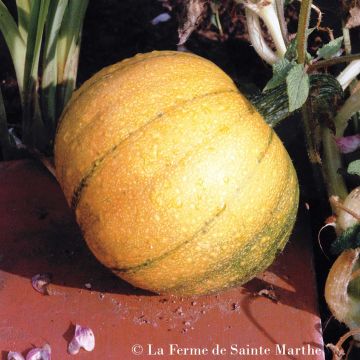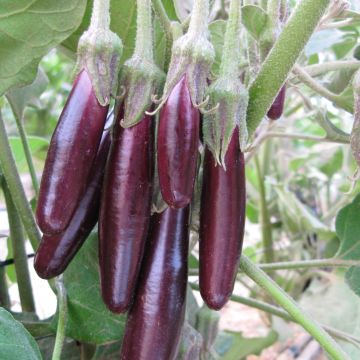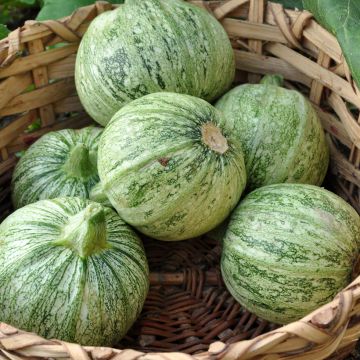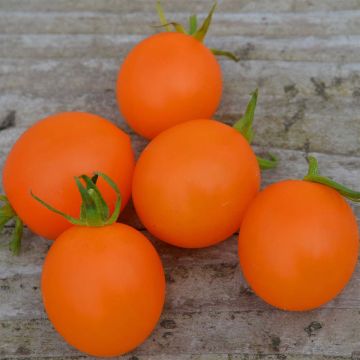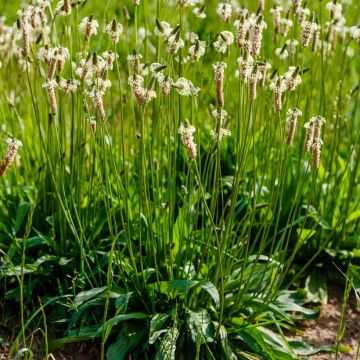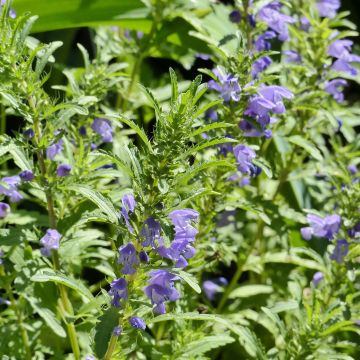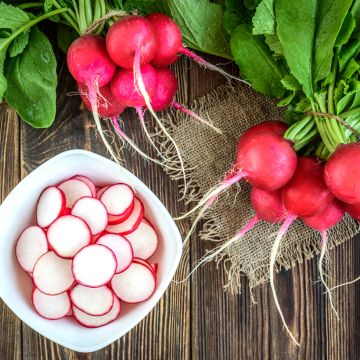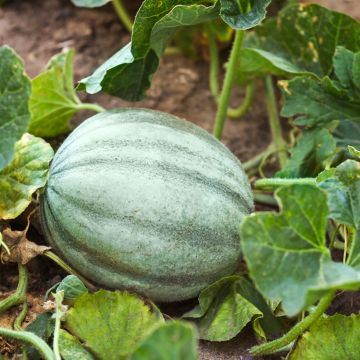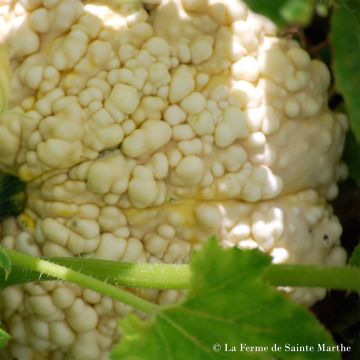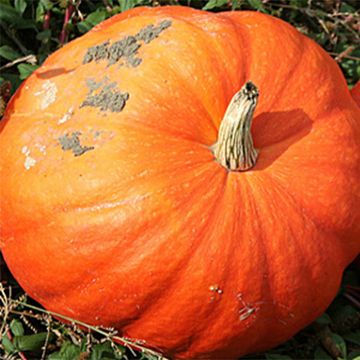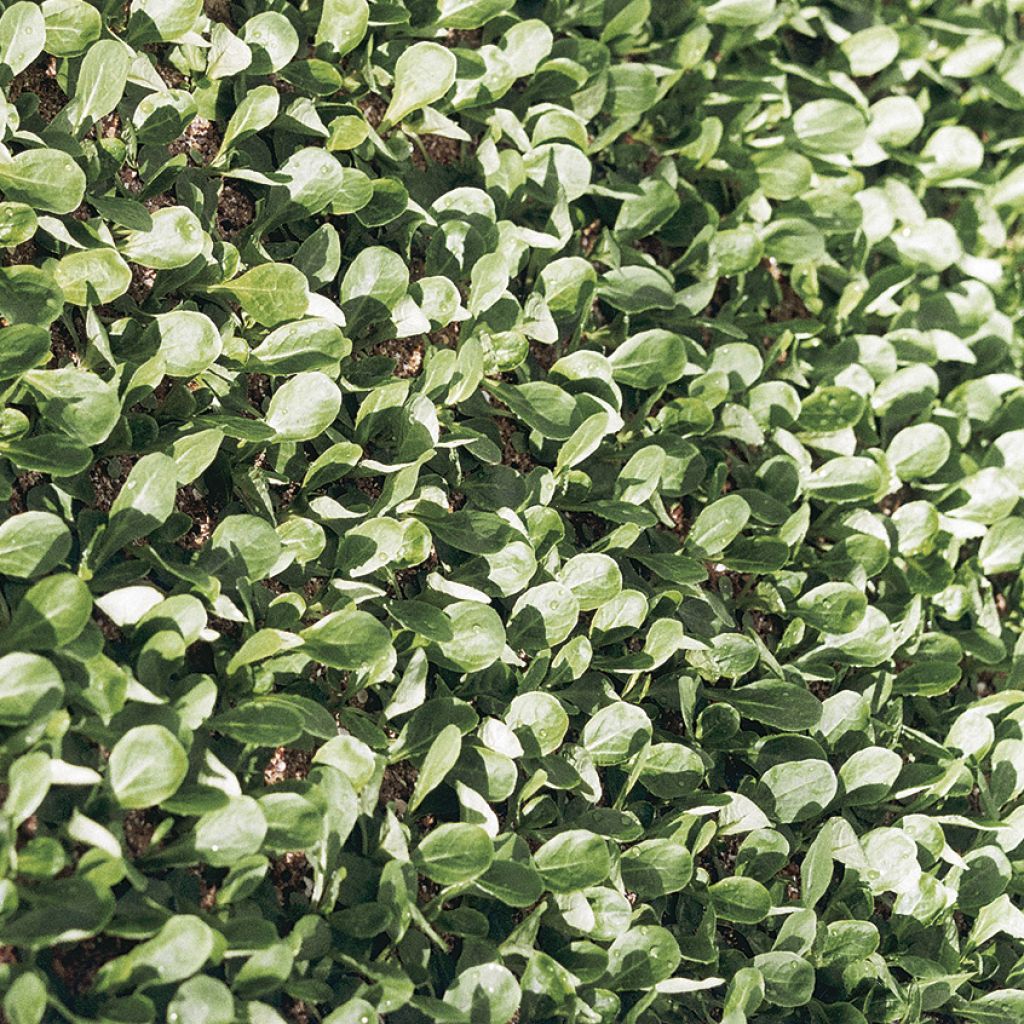

Corn salad Verte de Cambrai
Corn salad Verte de Cambrai
Valerianella locusta Verte de Cambrai
Corn salad, lamb's lettuce
This item cannot be shipped to the selected country
Dispatch by letter from €3.90
Dispatch by letter from €3.90
More information
Dispatch by letter from €3.90
Dispatch by letter from €3.90
More information
Schedule delivery date,
and select date in basket
This plant carries a 6 months recovery warranty
More information
We guarantee the quality of our plants for a full growing cycle, and will replace at our expense any plant that fails to recover under normal climatic and planting conditions.
Seed-only orders are dispatched by sealed envelope. The delivery charge for seed-only orders is €3.90.
Seed-only orders are dispatched by sealed envelope. The delivery charge for seed-only orders is €3.90.
Description
The Green Cambrai Lamb's Lettuce is a traditional variety, quite late but very cold-resistant. It produces beautiful rosettes of spatulate, wide and fleshy leaves. Eaten raw, it brings a fresh touch to mixed salads. Cooked, it can be prepared just like spinach. This little salad is rich in vitamin C and iron: it's a true panacea to enjoy all winter. Sow from August to October for a harvest from autumn to the end of winter.
Lamb's Lettuce is a small salad with rounded leaves grouped in rosettes. It's THE little salad of autumn and winter, even though some varieties called "all-season" can be sown and harvested throughout the year. Varieties with large seeds have larger leaves but are less cold-resistant than those with tiny seeds.
Lamb's Lettuce belongs to the Caprifoliaceae family (like Honeysuckle) and grows wild throughout Europe to the point that it is sometimes called a "weed".
This little salad is mainly eaten raw, on its own or accompanied, for example, by kiwi and avocado or beetroot, but it can also be cooked, like spinach. Its nutritional value is remarkable, as it is low in calories but particularly rich in vitamin C (three times more than Lettuce), vitamin E, and beta-carotene.
Cultivating Lamb's Lettuce is easy, but the sowing must be done in firm soil, and it is essential to ensure that the soil remains moist.
Harvest: Using a knife, Lamb's Lettuce is harvested as needed by cutting the rosette just above the neck.
Storage: It can be stored for a few days in the refrigerator's vegetable drawer.
Gardener's tip: If you belong to the category of gardeners who, even in the vegetable garden, tolerate a bit of disorder, don't hesitate to let some rosettes go to seed in the spring. They will self-sow and provide you with some greenery on your plate without any cost or effort!
Harvest
Plant habit
Foliage
Botanical data
Valerianella
locusta
Verte de Cambrai
Caprifoliaceae
Corn salad, lamb's lettuce
Western Europe
Annual
Other Salad leaf seeds
Planting and care
Sowing: The germination of Lamb's Lettuce occurs at about 14°C. The seedlings emerge in approximately 10 days.
Sowing is done in September/October for a harvest from December to March.
On firm soil, not dug up, just raked, make furrows spaced 15 to 20 cm (6 to 8in) apart, with a depth of one centimetre. Sow in rows, spacing the seeds 0.5 to 1 cm (0in) apart, cover with a bit of fine soil and firm down the sowing with the back of a rake. Keep the soil moist until the seedlings emerge. Lamb's Lettuce is preferably sown in shade or partial shade. If this is not possible, cover your sowing with a light mulch, like a very thin layer of herb, to maintain good moisture until the arrival of autumn rains.
Sowing can also be done by broadcasting, using 5 to 7 grams (12 grams for varieties with large seeds) for 10 m2.
Cultivation: Lamb's Lettuce is not demanding and does not require any prior fertilisation. Varieties intended for winter cultivation are hardy, but up to a certain point... Remember to protect them from extreme cold during harsh winters by covering them with a winter veil or a layer of straw.
It is a salad that grows very well in a cold greenhouse or under a polytunnel.
As for companion planting, Lamb's Lettuce is a good neighbour. You can sow it at the base of many vegetables and interplant it between rows of Escarole, Spinach, Radishes...
Seedlings
Care
Intended location
This item has not been reviewed yet - be the first to leave a review about it.
Vegetable seeds
Haven't found what you were looking for?
Hardiness is the lowest winter temperature a plant can endure without suffering serious damage or even dying. However, hardiness is affected by location (a sheltered area, such as a patio), protection (winter cover) and soil type (hardiness is improved by well-drained soil).

Photo Sharing Terms & Conditions
In order to encourage gardeners to interact and share their experiences, Promesse de fleurs offers various media enabling content to be uploaded onto its Site - in particular via the ‘Photo sharing’ module.
The User agrees to refrain from:
- Posting any content that is illegal, prejudicial, insulting, racist, inciteful to hatred, revisionist, contrary to public decency, that infringes on privacy or on the privacy rights of third parties, in particular the publicity rights of persons and goods, intellectual property rights, or the right to privacy.
- Submitting content on behalf of a third party;
- Impersonate the identity of a third party and/or publish any personal information about a third party;
In general, the User undertakes to refrain from any unethical behaviour.
All Content (in particular text, comments, files, images, photos, videos, creative works, etc.), which may be subject to property or intellectual property rights, image or other private rights, shall remain the property of the User, subject to the limited rights granted by the terms of the licence granted by Promesse de fleurs as stated below. Users are at liberty to publish or not to publish such Content on the Site, notably via the ‘Photo Sharing’ facility, and accept that this Content shall be made public and freely accessible, notably on the Internet.
Users further acknowledge, undertake to have ,and guarantee that they hold all necessary rights and permissions to publish such material on the Site, in particular with regard to the legislation in force pertaining to any privacy, property, intellectual property, image, or contractual rights, or rights of any other nature. By publishing such Content on the Site, Users acknowledge accepting full liability as publishers of the Content within the meaning of the law, and grant Promesse de fleurs, free of charge, an inclusive, worldwide licence for the said Content for the entire duration of its publication, including all reproduction, representation, up/downloading, displaying, performing, transmission, and storage rights.
Users also grant permission for their name to be linked to the Content and accept that this link may not always be made available.
By engaging in posting material, Users consent to their Content becoming automatically accessible on the Internet, in particular on other sites and/or blogs and/or web pages of the Promesse de fleurs site, including in particular social pages and the Promesse de fleurs catalogue.
Users may secure the removal of entrusted content free of charge by issuing a simple request via our contact form.

































